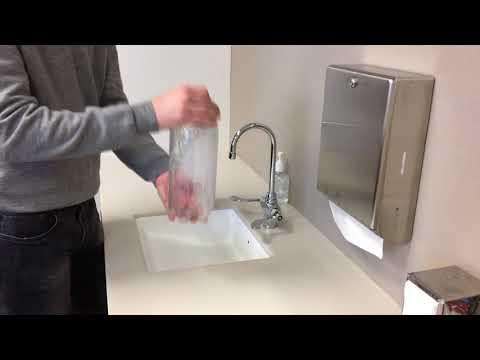Emergency Preparedness
Learn how to prepare emergency water supplies
EMWD continuously works to protect public health and safety by strengthening facilities and practicing strategies for a quick response and recovery. A major disaster can temporarily disrupt water and sewer services.
EMWD encourages customers to be prepared for large scale emergency situations such as earthquakes, fires and/or floods.
Store enough tap water or bottle water to last three to seven days.
Fact Sheet - How to Prepare Emergency Water Supplies (English)
Fact Sheet - How to Prepare Emergency Water Supplies (Spanish)
Be prepared to disinfect additional water supplies to supplement what you store..
Your emergency/disaster supplies should include a heat source, such as a camping stove, plus a clean pot, measuring spoons or a clean medicine dropper, and a sealed bottle of regular, unscented liquid bleach with no additives. Replace your bottle of bleach every six months.
Disinfect any questionable water supplies.
Properly stored water is safe to drink. Disinfect your stored water if the container is leaking or was not sealed airtight, has been stored longer than six months, has an unusual odor, or you have other concerns about its safety. Boiling is the preferred method to disinfect water. If you have no power, use a camp stove to disinfect water by boiling it for at least two minutes after it reaches a vigorous rolling boil. If boiling is not possible, add a measured ¼ teaspoon or 16 drops of bleach to each gallon of water and then let it stand for 30 minutes. A slight chlorine taste and smell is normal.
Reserve stored water for drinking and food preparation.
Depending on the severity of damage following an earthquake, it may be difficult for public agencies to get emergency water supply distribution locations up and running quickly. Avoid using your personal emergency drinking water supply for washing and cleaning. If you run out of stored drinking water, you can strain and treat water from your water heater. To strain, pour the water through a clean cloth or layers of paper towels. Then disinfect the water as described above. Consider using water from the toilet tank (not the bowl, and do not use water from the tank if it has a blue dye or other cleaner) or perhaps a pool or other outdoor water source for washing and cleaning purposes.
Be prepared with a sanitation kit for an outage that could prevent toilets from flushing.
Your kit should include toilet paper, wipes and hand sanitizers, plastic garbage bags, a bucket, and a deodorizing chemical such as lime, bleach or chemicals sold for camping.
Be ready for action.
Know your utilities and who to call. Other water emergencies may include open hydrants, main breaks or additional water or sewer related crises. If you are experiencing a water emergency, please contact EMWD’s Integrated Operations Center (IOC) at 1-800-698-0400.
EMWD Hazard Mitigation Plan
The EMWD Hazard Mitigation Plan is a living document that reflects ongoing hazard mitigation activities. Hazard mitigation involves strategies to reduce short and long-term vulnerability to identified hazards. This document serves as the framework for the ongoing identification and implementation of hazard mitigation strategies developed for EMWD Service Area.
EMWD adopted its previous Hazard Mitigation Plan in 2017. This document serves as an update to that Plan.


